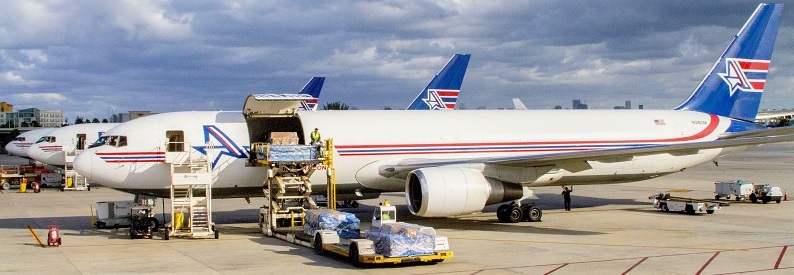Amerijet Challenges K-Aviation’s US Entry Amid Regulatory Stalemate with Seoul

In a reciprocal regulatory standoff, Amerijet International (M6) has formally urged the US Department of Transportation (DOT) to halt the foreign carrier permit application of K-Aviation, a wholly-owned subsidiary of Korean Air. The move by Amerijet comes as it faces prolonged delays in obtaining approval from the Korean Ministry of Land, Infrastructure and Transport (MOLIT) to operate scheduled flights to South Korea.
Amerijet’s statement to the DOT, dated October 18, highlights its seven-month wait for a decision from MOLIT, dating back to March 2023. The US cargo carrier alleges that MOLIT’s requests for information have been “redundant and unduly burdensome.” Despite initial indications of approval, MOLIT reversed its decision following opposition from Korean Air, with Amerijet claiming it was not provided opposing comments or allowed to respond.
As a result, Amerijet has been limited to costly charter flights to South Korea, facing monthly application processes and last-minute approvals. The airline’s November charter flight application was pending, with MOLIT indicating consideration of Amerijet’s request for scheduled service alongside the charter application.
Amerijet argues that Seoul’s delays violate the open skies agreement between the US and South Korea, which mandates regulators to approve applications without undue delay.
On September 19, 2023, K-Aviation applied for an exemption and foreign carrier permit to operate 12 charter flights between South Korea and the United States. The application cites the open skies agreement and outlines K-Aviation’s establishment as a Korean Air subsidiary for business jet operations. The subsidiary plans to sign long-term charter contracts with Korean multi-national companies, utilizing a Boeing 737-700(BBJ) and a Bombardier Aerospace Global Express business jet for worldwide operations, including destinations in the United States.
The tit-for-tat regulatory challenge adds complexity to the ongoing US-South Korea aviation landscape, with both carriers seeking favorable outcomes in a highly competitive market. The DOT’s response and subsequent developments will shape the future of these applications and the regulatory relationship between the two countries.
